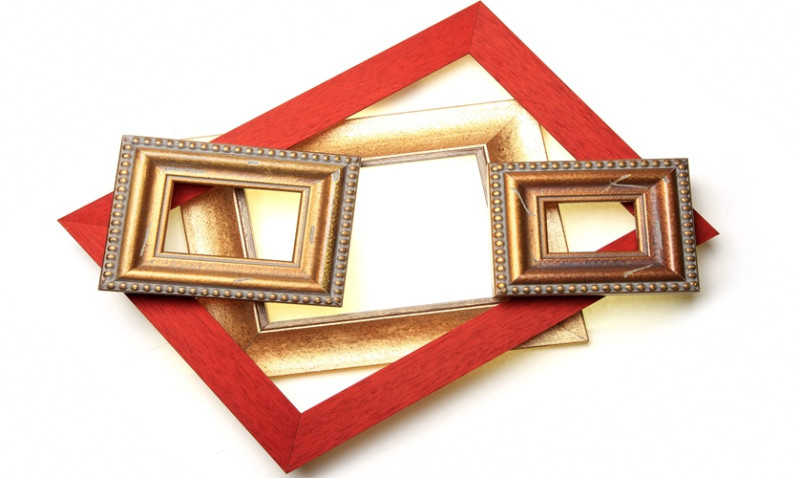
Whether you're an emerging artist, a creative DIY enthusiast, or a homeowner looking to turn your passion into profit, selling art can be one of the most rewarding ventures. The UK art market is thriving, with an increasing demand for original, handcrafted, and personalised pieces. However, navigating that market efficiently requires smart strategy, authentic branding, and a deep understanding of your audience. In this blog post, we’ll guide you through essential tips and tricks to help you successfully sell art, both online and offline.
1. Know Your Audience
Understanding who you’re creating art for is pivotal. Are you targeting young professionals looking to add character to their minimalist flats? Perhaps you're aiming for architects and interior designers purchasing pieces to complement their projects. Each group has unique tastes, budgets, and buying habits, which should influence your pricing and presentation.
For instance, young UK homeowners with an eye for design are often drawn to modern wall art, abstract canvases, and sustainable, local craftsmanship. On the other hand, interior designers and architects may look for custom-made art pieces that seamlessly blend with larger design themes. Knowing your audience will also determine the platforms you should sell on and how you should present your work in images, descriptions, and narratives.
Conduct market research through online art communities, forums, and social media to understand current trends. Pay attention to colour palettes, textures, and materials gaining popularity. Trends in wall décor, sculpture, and even framed digital prints shift often, and staying current increases your appeal.
Once you know who you're speaking to, you can more confidently tailor your branding, pricing, and marketing strategy to win their attention and trust.
2. Build a Memorable Brand
Your brand is more than just your name or logo—it’s your visual identity, voice, and mission that customers will remember. When selling art in a competitive market like the UK, a unique, cohesive brand sets you apart.
Create a visual identity that reflects your style—whether that's bold and colourful, vintage and textured, or minimalist and sleek. Then carry that look across all your customer touchpoints: website, social media, tags, packaging, and printed materials.
Be consistent about your origin story. People buy art for emotional reasons, and they love to know the process and passion behind a piece. Tell your story beautifully on your website and in product descriptions. Why did you create this collection? What does your art stand for? Does your process involve sustainability, reclaimed materials, or traditional British craftsmanship?
Use a memorable, professional artist name and invest in quality photography to showcase your work across all platforms. A consistent brand builds recognition, trust, and repeat customers.
3. Pick the Right Sales Channel
There are numerous ways to sell art, and the best option depends on your target audience, volume capabilities, and desired profit margin. Below are some common channels UK-based artists utilise:
| Sales Channel | Best For | Pros | Cons |
|---|---|---|---|
| Online Marketplaces (Etsy, Folksy) | DIY artists, niche crafts | Built-in audience, low setup cost | High competition, commission fees |
| Your Own Website | Artists with strong branding | Full control, higher margins | Requires SEO & marketing skills |
| Galleries & Exhibitions | High-end, large format artwork | Prestige, targeted buyers | Gallery commission, limited control |
| Pop-up Shops & Local Markets | Craft items and prints | Direct feedback, networking | Requires presence, setup costs |
| Social Media (Instagram, Facebook shops) | Younger, visual buyers | Engaging, direct messaging | Time-consuming, algorithm-dependent |
Many successful UK artists use a mix of these avenues. Start with one, master it, and then expand to others. Don’t underestimate the power of social media to drive traffic to your store or website—Instagram, in particular, is gold for visual creators.
4. Improve Your Presentation and Photography
In a digital-first world, your art’s first impression happens through a screen. High-quality photography is no longer optional—it’s crucial. Regardless of whether you’re selling fine art or watercolour greeting cards, ensure every product is expertly presented.
Use natural lighting or soft artificial light and capture multiple angles. Include shots that show scale, details and texture. Consider mock-up settings—for example, if you’re targeting UK homeowners, show your print framed above a sideboard in a well-lit living room. People want to visualise your work in their space.
Include lifestyle images as well as clean product shots against white backgrounds. Videos, 360 views, and time-lapses of your process are also great tools for more engagement and higher trust.
Consistency in editing style and branding can tie your online store together beautifully, improving buyer confidence and making the browsing experience seamless across platforms.
5. Price Your Art Strategically
Pricing your art can be tricky, especially when you're just starting out. Price it too low and you undervalue your work; too high and you may put off potential buyers. There are several factors to consider when setting your prices:
- Cost of materials and time spent
- Market value for similar work in the UK
- Your brand position (luxury vs. affordable)
- Wholesale or retail pricing depending on the sales channel
Remember to factor in packaging, shipping, platform commissions, and promotion costs. One effective method is to use a simple calculation:
Price = (Hourly Rate x Hours Worked) + Materials + Overhead + Profit Margin
Most importantly, be confident in the value you're offering. If your art involves craftsmanship, creativity, and uniqueness, there's a buyer out there who will pay appropriately for it—especially in niche UK markets that appreciate culture and handmade goods.
6. Make the Buying Process Easy
Eliminating friction in the buying journey can significantly boost your conversion rate. Whether you're using a custom online shop or a third-party marketplace, ensure every step is seamless and user-friendly.
Use high-quality product descriptions with keywords that resonate with your audience—think “boho wall art”, “abstract flower canvas”, or “original watercolour Yorkshire landscape”. These terms not only help with search engine optimisation (SEO) but also ensure your art shows up in relevant user searches.
Offer multiple secure payment methods (PayPal, card, Apple Pay) and clearly highlight delivery times and return policies, especially if you're targeting time-conscious professionals or designers with firm project deadlines.
For local UK customers, offering free or low-cost shipping within the country can be a deal-maker. Also, include a size guide or wall space recommendations to help customers choose the right piece for their home.
7. Build Relationships and Repeat Business
Art is often a personal purchase, and many satisfied customers return for more. Build strong relationships by offering top-notch customer service and follow-up.
Send a handwritten thank-you note with each order, follow up post-purchase with care tips or installation advice, and consider offering a discount on their next order. Small touches like these can go a long way in customer retention.
Encourage customers to tag you on social media when displaying your work. Sharing these images brings social proof and may spark interest from others in their circle, especially in design-conscious communities.
Start an email list and regularly share updates, behind-the-scenes content, and exclusive early access to new collections. If a professional designer or architect likes your work, consider offering bespoke commissions and long-term collaboration deals.
8. Network and Collaborate
As with any business, who you know matters. Don’t work in isolation—get your name out there. Attend local art fairs, craft markets, and gallery shows. Join online communities like UK-based Facebook artisan groups and forums for independent makers.
Reach out to local businesses, cafés, and interior shops that may be open to displaying or selling your art on consignment. Often, these partnerships open new doors and expose your work to customers who wouldn’t have found you otherwise.
Collaborate with influencers or micro-influencers in the home décor or DIY niche. A plan as simple as a social media shoutout in exchange for displaying your art can pay off significantly in the long run.
Also consider working with architects and designers on staging new properties or show homes, giving your pieces high-visibility while expanding your network among potential high-value clients.
Final Thoughts
Breaking into the UK art market doesn’t require a degree in fine art or a studio in Shoreditch. With passion, a strong online presence, and a solid understanding of your audience, you can sell your artwork effectively and profitably.
Always keep learning, adapt to new trends, and refine your offerings based on customer feedback. With consistency and creativity, your art can find a special place in homes, businesses, and hearts across the UK.
Now’s the time to turn your artistic hobby into a thriving business. What’s your next masterpiece going to be?





